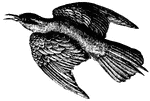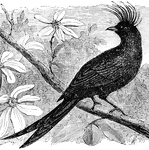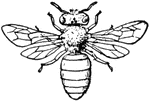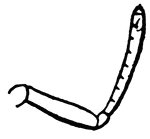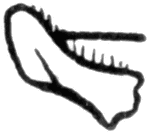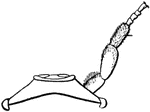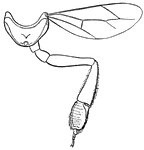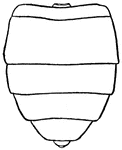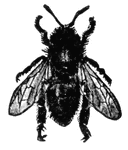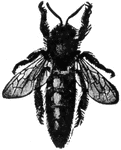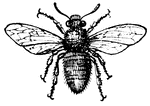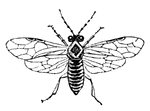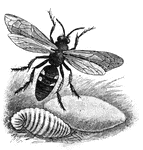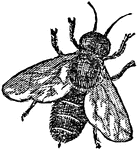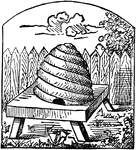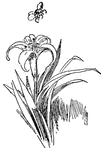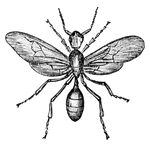
Red Ant
The red ants, here a winged male, are produced in great numbers at particular times of the year.

Red Ant
The red ants, here a wingless neutered male, are produced in great numbers at particular times of the…
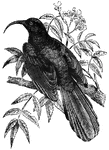
Namaqua Bee-Eater
The namaqua bee-eater, native to Western Africa. Its diet consists of insects, particularly bees and…
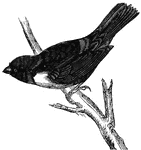
Scarlet Tanager
The scarlet tanager (also known as the black-winged summer redbird, or fire bird) feeds on insects,…

Honey Bee
"They are said to have originated in Greece, but have since spread all over the world; they live in…
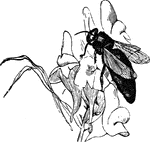
Queen Bee
"The queen bee is larger and longer than the other bees; she moves in a slow and majestic manner, and…

Working Bees
""The working bee, for collecting wax, enters a flower, the stamens of which are loaded with pollen.…
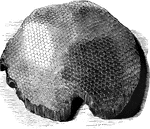
honey-comb
"The comb is made of wax, found in various plants, but which is also secreted by the bees themselves…

Cells of Honey Bees
"The hexagonal cells for the honey are build upon precisely that mathematical angle which affords the…

Bees Secreting Wax
"The secretion of wax, it would appear, goes on best when the bees are in a state of repose, and the…
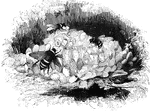
Interior of the Humble-Bee's Nest
"The Humble-bees, or as they are often called in this country, the Bumble-bees are…

Drone Bee
"Bee is the common name given to a large family of hymenopterous or membranous-winged insects, of which…
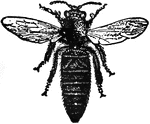
Queen Bee
"Bee is the common name given to a large family of hymenopterous or membranous-winged insects, of which…

Worker Bee
"Bee is the common name given to a large family of hymenopterous or membranous-winged insects, of which…

Royal Cells
"Bee is the common name given to a large family of hymenopterous or membranous-winged insects, of which…

Death's Head Moth
"The Death's-head Moth is the European Acherontia Atropos, a hawk-moth with markings on the thorax resembling…

Death's Head Moth Caterpillar
"The Death's-head Moth is the European Acherontia Atropos, a hawk-moth with markings on the thorax resembling…
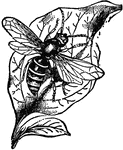
Hornet
"Hornet is the largest species of wasp found in America. The thorax is mostly black; the abdomen is…

Bust of Pindar
"Pindar, though the contemporary of Simonides, was considerably his junior. He was born either at, or…

Edward Lear's Rhymes
There was an old person of Dover, who rushed through a field of blue clover; But some very large bees…

Wasp
A genus of insects somewhat resembling bees, but differing fromm them in having a more powerful sting,…
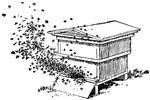
Beehive
A specific container used to keep bees. People use these containers to collect the bees honey.
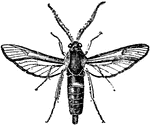
Sesiidae
"Clear-winged moths, Sesiidae, day-fliers, and looking more like bees, wasps, and ichneumons which they…
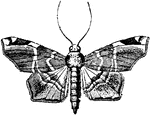
Pyralidina
"The Pyralidina are a group of small moths readily distinguished by their long slender bodies and large…
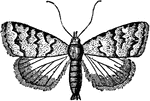
Pyralidina
"The Pyralidina are a group of small moths readily distinguished by their long slender bodies and large…
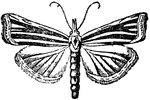
Pyralidina
"The Pyralidina are a group of small moths readily distinguished by their long slender bodies and large…

Pyralidina
"The Pyralidina are a group of small moths readily distinguished by their long slender bodies and large…
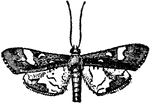
Pyralidina
"The Pyralidina are a group of small moths readily distinguished by their long slender bodies and large…

